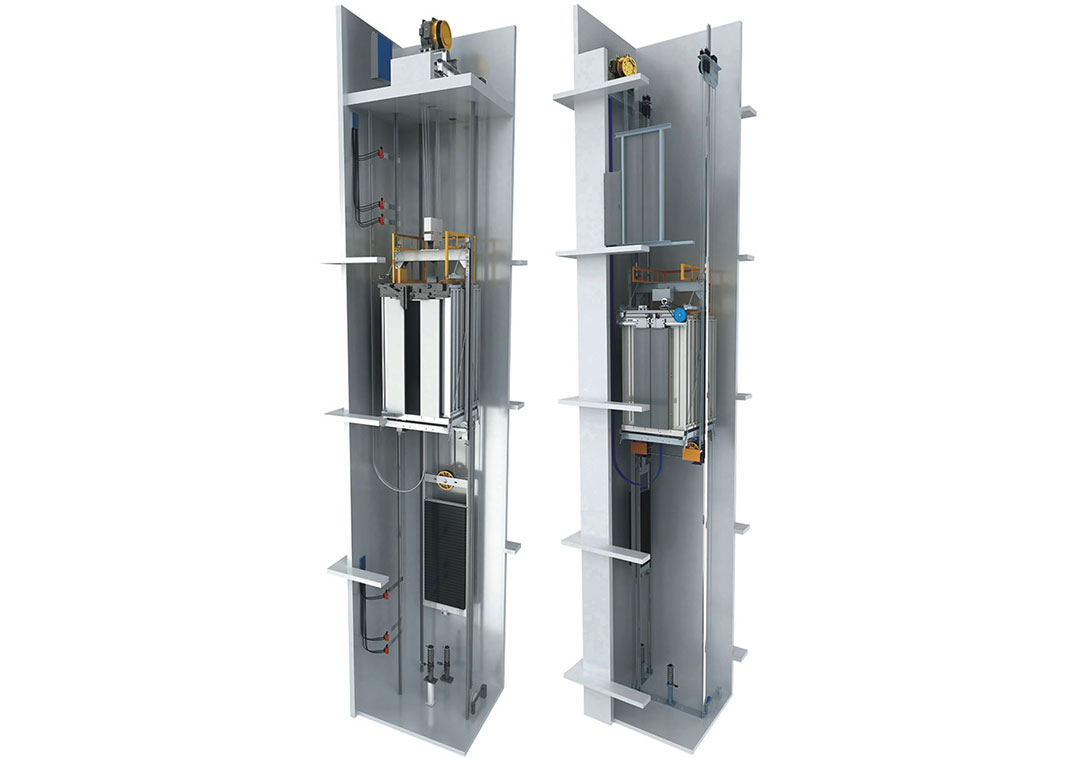Balancing passenger comfort while improving the efficiency of passenger elevators is a complex but critical issue. The design and optimization of elevator systems require comprehensive consideration of multiple aspects such as technology, user experience, and operational requirements. Here are some key strategies and technical means to achieve a balance between efficiency and comfort:
1. Intelligent scheduling algorithm
Intelligent scheduling is one of the core technologies for improving elevator efficiency. Through advanced algorithms (such as the Destination Control System, DCS), the operation path of elevators can be optimized to reduce waiting time and travel time.
How to improve efficiency: Intelligent scheduling can dynamically allocate elevators according to the passenger's destination floor to avoid empty or ineffective operation.
How to ensure comfort: The system will minimize frequent starts and stops and sudden acceleration/deceleration to ensure a smooth passenger experience.
2. Speed and acceleration optimization
The speed and acceleration of the elevator directly affect the operating efficiency and passenger comfort.
Efficiency improvement: Increasing the maximum speed and acceleration of the elevator can shorten the running time.
Comfort guarantee: Acceleration and deceleration need to be controlled within a reasonable range (usually 0.8~1.2 m/s²) to avoid passengers feeling uncomfortable or dizzy. At the same time, smooth start and stop processes can be achieved through variable frequency drive (VFD) technology.
3. Car design and space utilization
The design of the interior of the car has a direct impact on the comfort of passengers and also affects the carrying capacity of the elevator.
Efficiency improvement: Reasonable space layout can increase the number of people carried at a time and reduce waiting time during peak hours.
Comfort guarantee:
Sufficient space should be provided in the car to avoid crowding.
Use low-noise materials, optimize ventilation systems and lighting design to improve the riding experience.
Equipped with handrails, mirrors and other facilities to enhance the sense of security.
4. Reduce waiting time and psychological anxiety
Waiting for the elevator for a long time will reduce passenger satisfaction, so measures need to be taken to reduce waiting time and relieve psychological pressure.
Efficiency improvement:
Increase the number of elevators or operate in sections (such as segmented elevators in high-rise buildings).
Real-time display of elevator arrival time to help passengers arrange their time reasonably.
Comfort guarantee:
Provide clear information prompts in the waiting area (such as floor display screens, voice announcements).
Set up a comfortable waiting environment (such as seats, air conditioning, background music).
5. Energy management and environmental protection design
Energy-saving design not only helps to reduce operating costs, but also indirectly improves passenger comfort.
Efficiency improvement:
Use permanent magnet synchronous motor (PMSM) and energy feedback system to improve energy efficiency.
Use group control system to coordinate the operation of multiple elevators.
Comfort guarantee:
Energy-saving design can reduce noise and vibration during elevator operation.
The use of environmentally friendly materials can also improve the air quality in the car.
6. Safety and reliability
Safety and reliability are important components of passenger comfort and the basis of efficiency.
Efficiency improvement: Reducing failure rate and maintenance time can improve overall operating efficiency.
Comfort guarantee:
Regular maintenance and inspection to ensure smooth operation of elevators.
Equipped with emergency call system and backup power supply to enhance passengers' sense of security.
7. Personalized service
With the development of technology, elevator systems can provide more personalized services to further enhance passenger experience.
Efficiency improvement:
Use facial recognition or mobile app to book elevators and reduce waiting time.
Comfort guarantee:
Provide barrier-free design (such as wheelchair access, Braille buttons).
Adjust elevator operation mode according to passenger needs (such as silent mode, fast mode).
While improving the efficiency of Passenger Elevators, balancing passenger comfort requires multiple dimensions, including intelligent scheduling, speed optimization, car design, waiting time management, energy saving and environmental protection, safety assurance, and personalized services. These measures complement each other and together constitute an efficient and comfortable elevator system.











